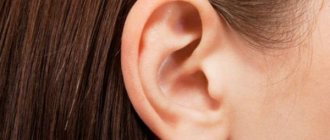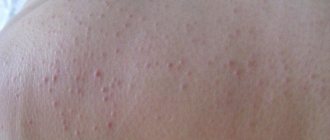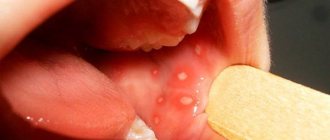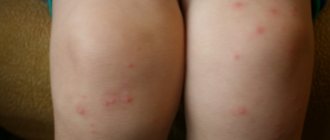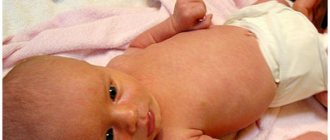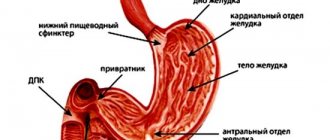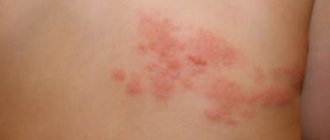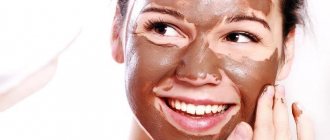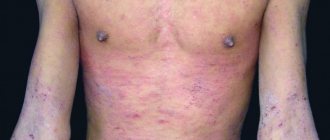What is meant by dysbacteriosis?
The human body contains a large number of bacteria and microorganisms. Many of them help the body and are very important for life. However, there are also harmful microorganisms that harm humans. The human body contains approximately 3 to 5 kilograms of beneficial and pathogenic microorganisms. They help the body break down food, destroy harmful substances, support the immune system, etc.
When harmful bacteria predominate in the body, dysbacteriosis occurs. Dysbacteriosis is not a disease; it is mainly a syndrome. Dysbacteriosis has 4 degrees of severity and is a serious disorder. The main causes of dysbiosis are:
- Incorrectly formulated diet. For normal life, a person needs a balanced diet, but many people neglect this. When animal fats and proteins begin to predominate in the body, food begins to ferment and rot. Thus, the balance of microorganisms is disrupted.
- Frequent use of antibiotics. Antibiotics, once in the intestines, disrupt the normal functioning of the body and cause the proliferation of pathogenic bacteria.
- Intestinal infections. Infections such as dysentery destroy beneficial bacteria, allowing harmful bacteria to multiply.
- Parasites in the intestines. Many parasites produce toxins that are aimed at destroying necessary microorganisms.
- Diets are often the cause of dysbiosis in women. In pursuit of an ideal appearance, women forget about their health. Many women, in order to lose weight, take medications that disrupt the intestinal microflora. And as a result, a woman’s health is undermined, as is her beauty, because pimples and blackheads begin to appear on the skin.
Manifestations of dysbacteriosis in the gastrointestinal tract
One of the reasons for the development of dysbiosis is diseases of the gastrointestinal tract. For example, intestinal infections such as dysentery and salmonellosis lead to the destruction of microflora useful for metabolism. The level of pathogenic microbes increases.
Dysbacteriosis. Symptoms in adult women, gastrointestinal manifestations, allergies
When bacteria enter the body, they release poison that affects the intestines, gastric mucosa, small and large intestines.
Symptoms:
- diarrhea or, conversely, constipation;
- general weakness;
- the disease progresses rapidly;
- nausea;
- after a certain time, vomiting may occur;
- the temperature may rise;
- metallic taste in the mouth;
- belching;
- a sharp decrease in appetite;
- dull, aching pain in the abdominal area;
- headache.
Signs of dysbiosis
Symptoms of dysbiosis are different for each person and manifest themselves differently. Externally, dysbacteriosis manifests itself on the skin of the face. Acne from intestinal dysbiosis is concentrated on the chin. In addition to acne, there are many other signs that indicate disorders in the intestines:
- Very often dysbacteriosis is accompanied by stool disturbances. And it manifests itself in the form of diarrhea, which has a putrid odor. Or it manifests itself in the form of constipation.
- When pathogenic bacteria predominate, bloating occurs as they produce gas.
- Dysbacteriosis is often accompanied by pain. Because it affects the intestinal walls. If the disorder occurs in the small intestine, then pain is felt in the navel area. If it is the colon, then the pain is concentrated in the lower abdomen.
- Dysbacteriosis is often accompanied by intoxication of the body.
If you have at least one sign and acne on your face, you should consult a specialist. Acne from dysbacteriosis and pustules form in the lower part of the face, mainly on the chin. Pimples are formed due to the fact that pathogenic bacteria produce toxins that affect the functioning of the sebaceous glands. This is what causes acne to form, which is mainly concentrated on the face and neck.
Treatment of dysbiosis
If acne on the face arises from dysbacteriosis, then trying to get rid of it only with cosmetics is pointless. It is best to carry out complex treatment, which can take a long time. But before starting treatment, you need to make sure that the cause is dysbacteriosis. Therefore, it is recommended to first conduct a diagnosis. After all, acne on the face can be the cause of another disease.
In order to normalize the functioning of the body and get rid of acne, it is not necessary to use medications, it is enough to review your diet, but this can only help in the first two stages.
In order to cure dysbiosis and get rid of acne on the face, you need to:
- Eat foods that contain fiber more often. It is found in large quantities in fruits and vegetables. Thanks to fiber, the balance of microorganisms in the body is normalized. In addition, you can get rid of acne caused by other reasons in the same way. It is the foods that people eat that affect the condition of their skin. So, many representatives of the fair sex get acne on their faces from eating sweets.
- Exclude from the diet: spicy, fast food, sweet, smoked and canned foods. In addition, acne and liver dysfunction are often caused by foods high in fat. In addition, it is recommended to steam everything.
- You can achieve quick results by cleansing the intestines using rinsing. Flushing can be done at home, but the best treatment is a deep cleaning, which can only be done in a hospital. After cleansing, the functioning of the body and sebaceous glands is normalized. And after a few days, acne and other rashes disappear. You can carry out cleansing at home using infusions of medicinal herbs and enemas. But treatment at home will take longer.
- If dysbiosis is already at stage 3 or 4, then it should be treated with the use of pribiotics and other medications that should be prescribed by a doctor. You can independently use such pribiotics as: Hilak forte, Enterosgel, Polysorb and activated carbon.
Naturally, it is best to treat dysbiosis after consultation with a doctor and special means. However, according to many people, some remedies are as good as medications. So, with the help of tinctures from plants such as chamomile, St. John's wort, burnet, you can quickly return the body to normal. The same effect can be achieved by eating garlic or seeds and nuts. And with the help of calendula decoction you can quickly get rid of acne.
Prevention of dysbacteriosis
To avoid dysbiosis and further problems caused by the disorder, you should follow several tips:
- Do not use antibiotics unless necessary.
- Carefully consider a diet that will provide a person with everything necessary.
- Maintain good hand hygiene and do not eat food with dirty hands.
- Do not neglect health problems and pay attention to the condition of your skin. So, pimples on the forehead indicate heart problems.
Human skin not only performs a protective function, but also signals various disorders: such as disorders of the liver, kidneys and intestines. Dysbacteriosis is the main reason why acne appears at work. Dysbacteriosis is not a disease, but it can lead to serious consequences. Therefore, after detecting symptoms, it is recommended to visit a specialist and follow the prescribed treatment. If a person cannot tolerate medications and wants to be treated with traditional medicine, then he should inform the doctor about this. Since self-medication can sometimes lead to serious consequences, especially if a person has not determined what to be treated for.
The article was checked by doctor Elizaveta Anatolyevna Krizhanovskaya About our authors and experts.
Source of the article: https://6tu4ka.ru/201801/pryshhi-ot-disbakterioza.htm
Why does acne appear due to dysbiosis?
In most cases, various pathogenic elements on the skin, such as blackheads, pimples, various black and white spots, acne are not only a cosmetic defect. The problem of the appearance of such formations, as a rule, is much deeper and lies in the presence of some kind of disease of the internal organs, for example, in the digestive system. Acne often appears due to dysbiosis, which requires attention and proper treatment.
Causes of acne due to dysbiosis
If in adolescents the main reason for the appearance of a large number of acne is a hormonal imbalance during puberty, then in adults such pathogenic elements usually appear precisely because of disruptions in the digestive system.
Dysbacteriosis is a disorder of the intestines, in which the balance between pathogenic and beneficial microflora of the organ changes. If, under normal conditions, beneficial microorganisms involved in digestion and ensuring the complete absorption of all beneficial elements inhibit the development of the pathogenic part of the microflora, then if the balance is upset, the suppression of beneficial microorganisms by harmful ones begins.
At the same time, pathogenic bacteria begin to actively multiply, increasing their number and disrupting normal digestive processes. As a result, the food consumed by a person cannot be fully digested and most of the substances that are useful and necessary for the body are simply not absorbed because they are not broken down to the desired state.
Against this background, a person develops weakness, constant fatigue, vitamin deficiency, and his general condition worsens, which also affects the skin. The surface of the epidermis becomes dry, paler, may acquire slightly unhealthy shades, peeling and inflammation appear, and protective functions decrease. In addition, in most cases, the active formation of acne and acne begins.
In this case, their appearance is explained not only by a lack of tissue nutrition and a general deterioration in human well-being, but also by the fact that pathogenic microorganisms, which are found in large quantities in the intestines, during their normal life activities form various toxic compounds that pollute and poison the body.
It is important to remember that if pathogenic elements appear on the skin due to dysbiosis, then treating them with conventional cosmetics and products will be useless. To effectively treat such a problem, it is necessary to eliminate the main cause of the appearance of such formations.
Dysbacteriosis in humans can appear for various reasons, for example:
- After suffering an acute intestinal infection;
- If the functioning of some internal organs related to the digestive system is disrupted;
- With frequent or constant stress, anxiety, strong emotional tension;
- With poor nutrition or frequent consumption of harmful foods;
- After food poisoning;
- After treatment of various diseases with the use of heavy medications, in particular antibiotics.
Often the cause of dysbacteriosis, as well as acne on the face and body, is the inadequate and unreasonable use of laxatives. Some women, trying to quickly lose excess weight, begin to take large doses of laxatives, the effect of which does not lead to a decrease in body weight, but to the removal of fluid from the body. This approach leads to the fact that, along with the fluid, many useful elements, vitamins, as well as the necessary intestinal microflora are washed out of the body, which is why the active growth of pathogenic bacteria begins and dysbiosis appears.
Acne from dysbacteriosis: can it appear and how to treat it?
Acne is considered to be exclusively a problem for young people. During adolescence, the skin of a teenager is replete with acne and inflamed. Of course, young people worry about their spoiled appearance, envying people with a clean face.
Teenage problems can be solved when an experienced doctor is involved. It happens that acne disappears on its own when hormones stop boiling.
If adolescence has long been left behind, and acne does not go away, there is a high probability of developing acne due to dysbiosis.
Girls especially suffer from unclean skin. Owners of unattractive red spots buy ointments and gels for acne, throwing away a lot of money.
Foundation and powder that mask inflammation are not cheap. And acne does not think of leaving the face, continuing to multiply. The solution to difficulties is not found on the shelf of a cosmetic store.
Acne with dysbacteriosis appears due to intestinal pathology.
What to do?
Putting up with redness and inflammation is not an option. You won't have to deal with problem skin. It will take efforts to destroy internal enemies. The covers are a kind of mirror, reflecting what is happening inside.
A clue as to where the cause of the inflammation is located has been received. All that remains is to undergo the examination. Pay close attention to the glandular system (endocrine), gynecology, and do not skip the gastrointestinal tract. The cause of irritated skin may be dysbacteriosis. In this case, acne can be treated from the inside; ointments and lotions will help from the outside.
What is dysbiosis
Dysbacteriosis and acne often go in parallel. In case of illness, the balance of beneficial and pathogenic bacteria inhabiting the intestines is disrupted. A large community (weighing 2 kg) of microorganisms has settled in the gastrointestinal tract of a healthy person. The lion's share of biota does not cause harm, and is even useful. Microscopic objects produce a number of functions:
- participate in digestion;
- help produce vitamins B and K;
- break down fiber into amino acids;
- accelerate peristalsis.
When beneficial bacteria become scarce, harmful strains immediately begin to multiply. A number of inconveniences arise. Pathogenic microorganisms produce toxins that are absorbed into the blood and poison the body. The result is problems with the gastrointestinal tract. Due to toxins, migraines can occur and vulnerability to infections is increased. Unpleasant skin changes are often caused by two reasons:
- Certain types of bacteria cause acne. At a certain stage of dysbacteriosis, microorganisms penetrate into places where the specified flora should not be present.
- Allergic reactions manifest themselves in the form of a rash. Indigestion and lack of vitamins contribute to such skin reactions.
How to fight?
The result is the appearance of acne, dermatitis, peeling (with a lack of B vitamins). The immune system is weakened, further facilitating the process of, for example, fungal invasion. Treatment of external manifestations does not produce results - the cause is internal.
When hives bother you, it seems logical to a sane person to start allergy treatment. But antihistamines will not have an effect if there is another reason. 85% of cases of acne on the face are due to dysbacteriosis; pathogenic microflora should be combated.
Woe from mind
The situation sometimes gets worse, paradoxically, the desire to look good becomes the culprit. This is especially true for women trying to lose weight. The methods used are sometimes barbaric: laxatives, cleansing enemas.
Normal microflora disappears from the intestines. A procedure designed to cleanse the body of toxins results in damage to health. In addition to toxins, beneficial strains of bacteria are removed.
In an effort to lose weight, instead of enemas, go on a vegetable diet or eat fruits.
Acne formation due to dysbacteriosis
Many people believe that the presence of dysbacteriosis does not in any way affect the formation of acne on the skin, but such a statement is a misconception, because the connection here is quite close.
If the epidermis of the face or body is affected by a significant number of pimples, while new pathogenic elements regularly appear, and existing ones cannot be eliminated with the help of cosmetics, then the reason is almost always the contamination of the body with toxins and waste products, which are waste products of pathogenic microorganisms. In such situations, toxins begin to be eliminated in various ways, including through the skin, penetrating into all biological fluids, for which the natural metabolic processes of epidermal cells are not prepared. As a result, toxic substances begin to accumulate in the upper layers of the skin, which leads to inflammation and the formation of pimples and acne.
In a healthy body, the function of removing toxins is assigned to the kidneys, intestines and skin, but if a person has dysbiosis, then the intestines are not able to fully perform this task. The kidneys are able to remove only a small part of the toxins that can be filtered from biological fluids. As a result, the main burden in this matter falls on the skin.
At the initial stage of this disorder, the sebaceous and sweat glands begin to work in increased mode, secreting sweat, which has a very unpleasant odor due to the toxins it contains. But gradually the glands stop coping with such an intense load, as a result, pores become clogged, the skin color fades, it becomes oilier, and sometimes, on the contrary, dry with flaking, acne begins to form, and when infectious microorganisms penetrate the skin, pimples.
Skin dysbiosis, manifestations, causes, methods of treatment
The condition of the skin is a mirror of the health and condition of the body. Poor nutrition, environment, poor quality water and stressful situations can lead to deterioration in the appearance of the skin. Often the main cause of rashes and other manifestations are malfunctions in the body, diseases of internal organs, the gastrointestinal tract, including dysbiosis.
Dysbacteriosis is an imbalance of the intestinal microflora, which leads to a deterioration in the absorption of useful and nutritious substances supplied with food. This leads to disruption of metabolic processes, resulting in excess weight, diseases of the cardiovascular system, kidney liver and skin problems.
Skin dysbiosis
Skin dysbiosis occurs due to poor removal of toxins from the body. If this disease is not treated, quite serious aesthetic problems with the skin may appear, so it is necessary to take time to restore the intestinal microflora.
How does skin dysbiosis manifest itself?
Skin dysbiosis manifests itself in the form of rashes, acne, blackheads, dryness, and also, on the contrary, increased production of sebum.
Of course, poor skin condition can be caused by poor-quality cosmetics or improper care.
But if all the rules and regulations for facial care are followed, and the condition of the skin becomes worse and worse, then the problem must be looked for inside.
Causes of skin dysbiosis
Skin dysbiosis can appear as a result of poor nutrition, antibiotic treatment and systematic stool disturbances - all this contributes to disruption of the intestinal microflora. The body is not able to remove all toxins from the body, the concentration increases, leading to rashes.
Diseases that can be caused by skin dysbiosis
Dysbacteriosis can provoke the development of seborrhea, the appearance of hyperpigmentation and early aging of the skin. Often, skin dysbiosis is accompanied by hypovitaminosis, associated with insufficient absorption of nutrients and vitamins by the body. With this combination, the skin begins to suffer first:
: Seborrhea, hypovitaminosis
- With a lack of vitamin A, dry mucous membranes and skin surface appear.
- Vitamin E deficiency causes premature aging and fine and deep wrinkles.
- A lack of vitamin B leads to dermatitis, dryness, cracks in the skin, and baldness.
- Biotin deficiency leads to brittle nails and hair loss.
- A lack of pantothenic acid manifests itself in the appearance of trophic ulcers and dermatitis.
If the disease is not treated, the skin will not be able to recover on its own for a long time, which can lead to a more advanced state of skin inflammation.
Dysbacteriosis of facial skin
During normal functioning of the body, the intestines, kidneys and skin surface are responsible for removing toxins. But with disturbed microflora, the intestines are not able to function at full capacity, the kidneys remove only part of the harmful substances, so the removal of the remaining part of the decay products falls on the skin. This starts to show up as follows:
- the work of the sebaceous and sweat glands intensifies, due to sulfur and ammonia secretions, the smell of sweat acquires a pungent and unpleasant odor;
- After a while, the glands stop coping with the removal of toxins and involve the pores of the skin;
- the skin becomes oilier, the pores enlarge, the skin becomes dull.
This whole process leads to the emergence of infection, and along with it acne, pimples, rashes, allergic reactions, itching and other unpleasant manifestations.
We can conclude that if liver and kidney diseases are excluded, problematic skin is associated with dysbacteriosis.
The solution to this problem lies not only in external care and treatment; first of all, it is necessary to normalize the intestinal microflora.
One of the most effective methods of treating dysbiosis, including skin dysbiosis, is pribiotics; they provide protection and resistance to environmental negative factors, and help get rid of acne and inflammatory diseases.
Rashes due to dysbacteriosis
Skin dysbiosis can manifest itself in the form of allergic rashes and most often takes on an acute form, i.e. In just a few hours it can manifest itself in the form of a rash and hives on the skin.
In addition to this, the rash may be accompanied by other symptoms: itching, the appearance of angioedema and decreased blood pressure.
Also, a distinctive feature of skin dysbiosis is redness of the rashes that appear, dryness, peeling and peeling of the top layer of skin.
Treatment of skin dysbiosis
First of all, treatment should be aimed at restoring the microflora with the help of drugs, they help destroy pathogenic microorganisms and restore beneficial ones. Once you start taking pribiotics, you will notice a gradual improvement in your skin condition.
Treatment of skin dysbiosis includes three stages:
- Cleansing. With the help of drugs, the body needs to help get rid of toxins and other breakdown products.
- Proper nutrition. It is necessary to enrich the diet with healthy and nutritious foods rich in vitamins and microelements, while eliminating all junk food.
- Recovery. It is necessary to restore the immune defense of the skin and mucous membranes, stop inflammatory and allergic reactions.
Since skin dysbiosis can be allergic in nature, along with taking probiotics and pribiotics, antihistamines are prescribed.
To reduce redness, inflammation of the skin, itching and flaking, creams and ointments should be used that can alleviate the course of the disease. But this method is only auxiliary and is not the main one.
Source: https://boleznius.ru/disbakterioz-kozhi-proyavleniya/
Treatment of acne due to dysbiosis
Of course, it is impossible to eliminate pathogenic elements without curing dysbiosis and without cleansing the body of harmful compounds and substances. Any cosmetic treatment that does not directly address the underlying problem will be useless. Therefore, when acne of this kind appears, you should contact a specialist to make an accurate diagnosis and prescribe adequate treatment.
In most cases, therapy consists of the use of special drugs, for example, Linex or Hilak-Forte, which stop the development of pathogenic microflora in the intestines, as well as drugs such as Bifidumbacterin, which restore normal beneficial microflora. In addition, the patient may be prescribed enzymatic agents to improve digestion and relieve stress on internal organs, as well as cleansing procedures to remove harmful compounds.
Proper nutrition also plays a significant role in such treatment, so it is necessary to follow a certain diet, the main place in which is occupied by fresh fruits and vegetables, as well as natural fiber. It is necessary to stop consuming all kinds of fast foods, chips, store-bought juices, sweet and baked goods, pickles, marinades, smoked foods, fatty and fried heavy foods. Such products create a favorable environment within the digestive system for the development of pathogenic microflora, which leads to the suppression of beneficial bacteria and the development of dysbiosis.
Simultaneously with the main treatment to eliminate acne, cosmetic procedures should also be carried out, consisting of daily cleansing of the epidermis from various contaminants and decorative cosmetics, cleansing the face of pathogenic elements and proper care according to the skin type, ensuring complete hydration and nutrition.
It is important to remember that cosmetic treatment, as well as the local use of medications for acne that appears due to the development of dysbiosis, will be effective only if the main therapy is aimed specifically at eliminating the disease and restoring the balance of microflora. At the same time, at the first stage of treatment it is necessary to stop the development of pathogenic microorganisms, then to restore the balance and only after that begin cosmetic effects.
Source of the article: https://otprishchei.ru/raznovidnosti-vospalenij-na-kozhe/vidy-pryshhej/iz-za-disbakterioza-poyavlyayutsya-pryishhi/
All about the connection between dysbiosis and acne on the face and body
Do you have acne, ulcers, rashes? Have you been trying to get rid of aesthetic defects with creams, lotions, ointments for a long time - but there is zero effect? Maybe we are not treating what is needed? This means the problem is much deeper, and you need to fight it only with the help of a doctor. First, you need to understand what dysbiosis is and why, when it is present, not only the gastrointestinal tract suffers.
Dysbacteriosis??? skin rashes like allergies cannot be treated (((
Do you have acne, ulcers, rashes? Have you been trying to get rid of aesthetic defects with creams, lotions, ointments for a long time - but there is zero effect? Maybe we are not treating what is needed? This means the problem is much deeper, and you need to fight it only with the help of a doctor. First, you need to understand what dysbiosis is and why, when it is present, not only the gastrointestinal tract suffers.
The connection between the appearance of acne and intestinal dysbiosis
The human body works as a single mechanism. If one fails, the entire system suffers. When acne appears on the face and body, pay attention to the functioning of the gastrointestinal tract. Monitor your symptoms and see your doctor for advice.
An initial examination by a dermatologist will help you find out the cause of skin rashes. The second specialist is a gastroenterologist. He will establish a connection between gastrointestinal disease and the appearance of acne. You will have to undergo a course of treatment to normalize your work.
There are bacteria in the human body. Beneficial ones help create favorable microflora in the intestines, harmful ones destroy it. Failure to operate leads to dysbacteriosis. Pimples appear on the skin. If left untreated, purulent acne will appear.
Causes of dysbiosis in adults:
- Lack of a healthy diet with a balance of consumed fats, proteins, carbohydrates. With excess amounts of junk food, toxins appear and beneficial microorganisms are destroyed.
- Causes intestinal dysfunction and excessive use of antibiotics. They disrupt the microflora, which needs to be restored to return the body to work.
- Infections contribute to the development of the disease.
- Presence of parasites in the intestines.
- An improper diet leads to stomach upset, intestinal dysbiosis and the formation of ulcers.
Features of acne with dysbacteriosis
Signs of dysbiosis:
- bowel dysfunction (diarrhea, constipation);
- bloating;
- pain and nausea;
- the appearance of acne.
Acne forms in the forehead, chin, cheeks and back due to dysbacteriosis.
The presence of symptoms with the addition of acne is a signal that you need to visit a doctor. The appearance of rashes is associated with toxins produced by bacteria. They disrupt the functioning of the sebaceous glands. The skin reflects what is happening inside the body.
on the topic: dysbiosis, symptoms in adult women
Dysbacteriosis is a common disease among millions of our compatriots. Dysbiosis is much more dangerous than it might seem at first glance. In order not to start the disease, you need to treat its first manifestations. And also to prevent the disease - eat right, lead a healthy lifestyle, take probiotics and vitamins.
Treatment of dysbiosis in adults: what you need to know? Watch this helpful video:
Allergic diseases associated with dysbacteriosis in adults. How to avoid such a reaction? Find out in the following video:
Can they manifest themselves in dysbacteriosis in children?
The appearance of rashes on the body of a newborn can be associated with the manifestation of dysbacteriosis. Bacteria enter the baby's body during childbirth. Breast milk helps develop the baby’s immunity and protect against harmful influences.rebe
Infants are characterized by the manifestation of transit dysbacteriosis. The reasons for the occurrence are the transition to artificial mixtures and antibiotic treatment. Accompanied by colic and stool disturbances.
With intestinal dysbiosis, pimples appear in the child. Redness forms everywhere - on the cheeks, stomach, knees, elbows. The baby suffers from abdominal pain, green diarrhea, and regurgitation. Sleep and appetite are disturbed, his mood worsens, he cries, and loses weight. Parents worry, try to take action, making mistakes.
The rash can become dangerous. It is useless to fight them if you do not normalize the functioning of the child’s gastrointestinal tract. You need to see a doctor. The specialist will make a diagnosis and prescribe the optimal medications. When the microflora in the intestines is normalized, pimples will disappear.
Comprehensive bacteriological studies will allow you to make a diagnosis. The success of treatment depends on proper nutrition of the baby. The best and healthiest is mother's milk. If problems arise, the doctor will recommend mixtures containing probiotics for normal digestion.
Why does acne occur with dysbacteriosis?
If the microflora is disrupted, after consuming food, we receive poorly filtered “material”, the blood becomes contaminated, and the negative consequences express themselves in certain signs. Therefore, as soon as a patient with inflamed skin, acne, and blackheads sees a dermatologist, he is sent for a detailed examination.
The main symptoms of microflora imbalance include:
- nausea;
- bloating;
- diarrhea;
- heat;
- chills;
- heartburn;
- pain in the stomach;
- smell from the mouth;
- hair loss, deformation of fingernails and toenails;
- acne;
- irritability;
- feeling hungry after eating;
- boils;
- rash, redness, pimples.
Dysbacteriosis and skin
Dysbacteriosis - an imbalance of intestinal microflora - is the most common cause of facial skin problems.
Our intestines are populated by many microbacteria. Among them there are beneficial (lactobacteria, bifidobacteria, bacteroides), harmful (staphylococci, streptococci) and “neutral”. With dysbacteriosis, the number of beneficial bacteria decreases, and harmful ones, on the contrary, increase. This leads to digestive upset, disruption of the absorption of beneficial vitamins and microelements, as well as fats.
It is worth noting that dysbiosis is rarely an independent disease. It often accompanies diseases such as gastritis, pancreatitis, and intestinal infections. In addition, quite often dysbiosis occurs as a result of taking antibiotics or changing the usual diet.
The main symptoms of dysbiosis:
- First stage of the disease. Rumbling in the stomach, bloating, abnormal stool.
- Second stage. Lack of appetite, diarrhea or constipation, characteristic white coating on the tongue, bad breath.
- Third stage. Frequent diarrhea and severe abdominal pain.
Fourth stage. Severe abdominal pain, apathy, drowsiness, excessive fatigue.
Treatment of dysbiosis begins with restoration of normal intestinal microflora. For this purpose, prebiotics, probiotics, and synbiotics are prescribed:
- Prebiotics are substances that stimulate the proliferation of beneficial microbacteria in the intestines and prevent the development of pathogenic microflora. Popular drugs: “Hilak Forte”, “Duphalak”, “Lactulose”, “Fervital”.
- Probiotics are “live bacteria” that inhabit the human body and are necessary for the normal functioning of the intestines. Popular preparations: “Bifiform”, “Linex”.
- Synbiotics are combination preparations that contain prebiotics and probiotics. Popular drugs: “Maxilak”, “Lactiale”, “Bifiliz”, “Bifidobak”.
Causes of dysbiosis
Disturbance of intestinal microflora can occur due to both external and internal factors. External ones include:
- poor ecology, climatic conditions;
- lack of hygiene;
- work in hazardous production.
Internal factors are:
- poor nutrition;
- strict diets;
- stress, depression;
- hormonal imbalance;
- decreased immunity;
- infectious diseases;
- gastrointestinal diseases: duodenitis, gastritis, colitis of various etiologies, pancreatitis, etc.;
- congenital gastrointestinal diseases;
- taking medications.
To combat problem skin, a full examination of the body is carried out, factors that provoke skin diseases are identified and complex therapy is applied.
Correct diagnosis
To determine the problem, it is necessary to examine blood, feces, urine, and in rare cases, a vaginal smear. The doctor prescribes a referral for tests in the following cases:
- The patient suffered an acute infectious disease;
- After long-term use of medications;
- With decreased immunity;
- If the infant is bottle-fed;
- For frequent allergic diseases - dermatitis, urticaria, eczema, etc.
The analysis is carried out twice: before the start of treatment and after eliminating the provoking factors. The ratio of beneficial and harmful microorganisms in the intestines and their sensitivity to certain types of medications are determined.
Treatment
In the treatment of dysbiosis, breastfeeding is especially important in the first year of a child’s life, especially when it comes to problems with microflora. If this is not possible, preference should be given to adapted mixtures rich in protective factors, for example: fermented milk, containing live bacteria, with prebiotics, etc.
It is not recommended to select mixtures yourself. You must first consult with your pediatrician.
The basis of treatment is drugs that eliminate an excess of pathogenic flora. They are prescribed only after receiving test results, otherwise it is unlikely that it will be possible to select an effective drug.
Next, taking pre- and probiotics is important. They will populate the intestines with healthy flora and create all the necessary conditions for its growth. In addition, you need to take a vitamin complex.
The body of a small child who has just been born is highly susceptible to negative factors. Sometimes children develop dysbacteriosis, one of the symptoms of which is a skin rash.
There are several reasons for this phenomenon; it is necessary to identify it and begin treatment as soon as possible. As soon as the baby's microflora is restored, all symptoms, including rashes, should go away.
In the modern world, symptoms of dysbiosis can appear in anyone - women, men, adults and children. The reason for this phenomenon is the frantic pace of life, in which it is difficult to adhere to a healthy lifestyle and proper diet. Let's not forget that the current environment and quality of products leaves much to be desired.
begin , sharp pain in the abdomen, problematic digestion - this is dysbacteriosis . Symptoms and causes in adult women have a number of features.
We find out the relationship between acne and intestinal microflora disorders
An experienced doctor, upon examination, determines in which places the acne is localized. With dysbacteriosis, acne, rashes, and pustules appear in the chin area. Why there? According to research, when the normal intestinal microflora is disrupted, human immunity decreases, pathogenic bacteria release toxins - toxic substances. Because of them, the skin loses its protective function, the sebaceous glands, mostly located on the face, become clogged. As a result, acne appears. It is not enough to fight them with cosmetic products; it is necessary to start treatment from the inside.
Treatment of acne due to dysbacteriosis
Treatment of acne due to dysbacteriosis requires a comprehensive approach. You won’t be able to get rid of the disease quickly, be patient. Treatment will be required both with external agents to cleanse the skin, relieve inflammation, and with medications. Doctors prescribe tests, consumption of probiotics, and a strict diet. To normalize the intestinal microflora, it is necessary to add fiber to the diet, which is fully contained in steamed fruits and vegetables. Thanks to coarse fibers, peristalsis and metabolism improve, toxins and waste are removed from the body. When consuming bifidokefirs enriched with probiotics, an optimal balance of bacteria is created in the intestines.
Healthy foods for the intestines
We have compiled a list of the most useful products that will help restore intestinal microflora and, therefore, improve skin condition:
Whole grain bread is a real storehouse of nutrients for the intestines. It contains large amounts of fiber, which normalizes cholesterol levels and promotes digestion. Bread made from rye flour is considered the healthiest. It lowers blood sugar levels and has a beneficial effect on the functioning of the gastrointestinal tract.
- Bran and grains. They contain a large amount of dietary fiber, which cleanse the body, reduce bloating, improve peristalsis and intestinal motility. Oatmeal is an ideal breakfast option for diseases of the gastrointestinal tract.
Pumpkin is a source of beneficial vitamins and minerals for our body. It contains large quantities of ascorbic acid, calcium, magnesium, riboflavin and other elements. In addition, pumpkin contains a lot of fiber.
- Legumes. Lentils are a unique source of iron and zinc. In addition, it contains fiber. Lentils help remove toxins from the body and improve digestion. Other legumes with a high fiber content are also considered beneficial for the intestines: black beans, kidney beans.
Carrots are known for their cleansing properties. Carotene in carrots restores the intestinal mucosa and improves its functioning.
- Broccoli is a storehouse of fiber and vitamins. Broccoli is not only beneficial for the mucous membrane of the gastrointestinal tract, but is also a natural antioxidant, because it helps remove toxins and cleanse the body.
- Sea kale contains a large amount of iodine and iron, which remove harmful toxins and promote digestion.
Garlic. This product contains useful phytoncides. These substances destroy pathogenic bacteria in the intestines and stomach.
- Jerusalem artichoke helps quickly cope with dysbacteriosis and normalizes microflora.
- Apricots and plums have a laxative effect and help remove waste and toxins from the body.
Figs are a source of beneficial vitamins (B1, B2, PP) and organic acids. Excellent helps in the fight against constipation.
- Green vegetables are a storehouse of insoluble fiber (which removes excess cholesterol, bile acids and toxins), as well as beta-carotenes and iron.
- Flax seeds contain soluble and insoluble fiber. Used to lower blood cholesterol levels and as a natural laxative.
Nuts (almonds, pistachios and others) contain a large amount of nutrients and have a beneficial effect on the functioning of the gastrointestinal tract.
